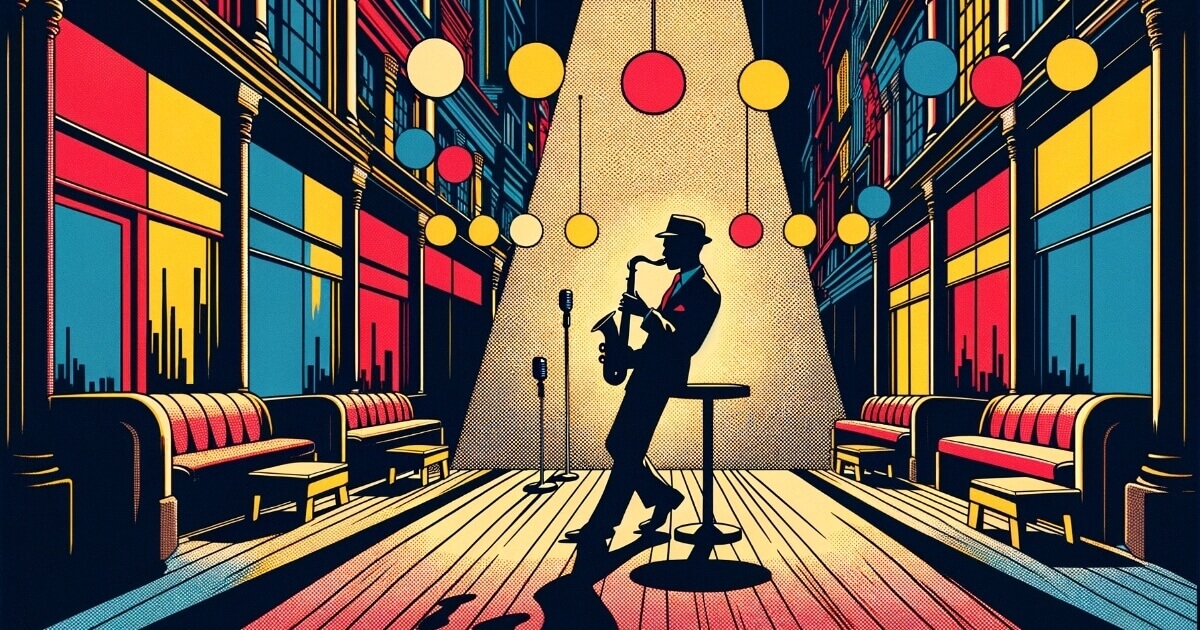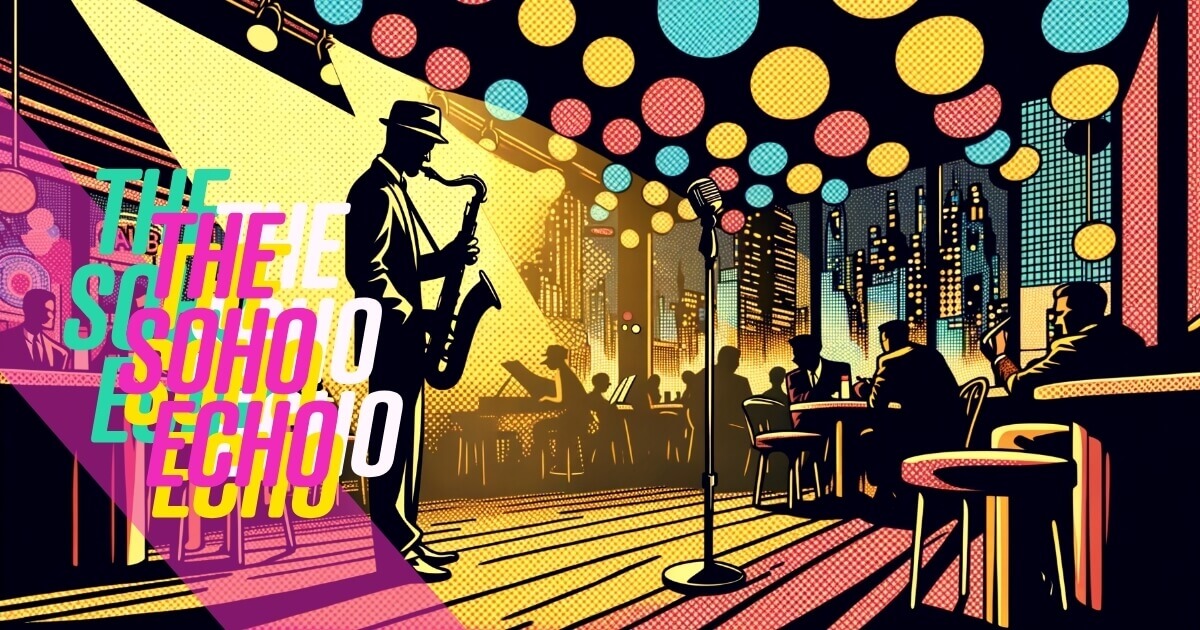Soho's Cool Generation: Jazz, Creativity, and Cultural Revolution

Cool Generation (1950–1959)
Soho, the beating heart of London, has long been a sanctuary for the avant-garde, a playground for artists, musicians, and dreamers. The 1950s, in particular, marked a pivotal moment in its storied history—ushering in an era known as the ‘Cool Generation’. This was a time when jazz ruled the rooms, the black market met the avant-garde, and the legend of Soho was sealed in the sultry tones of saxophones and the soft glow of club lights. One venue, in particular, stands as a beacon of this transformative decade: Club Eleven.
Nestled in the vibrant tapestry of Soho, Club Eleven was more than a mere music venue; it was a crucible of creativity where the sounds of jazz mingled with the raw energy of post-war Britain. Patrons would gather in intimate settings to witness unforgettable performances, each note echoing the hopes and dreams of a generation ready to break free from the confines of the past. But what made this era so special? Let us explore the multi-faceted world of the Cool Generation, its key figures, and the cultural phenomena that defined a decade.
The Birth of the Cool
The 1950s in Britain was a time of great change. The shadow of World War II had begun to lift, and with it, a newfound freedom emerged. Youth culture blossomed, influenced by the rhythms of America, particularly the jazz scenes that were taking the world by storm. The arrival of the Cool Generation was not just about music; it was a cultural revolution that encapsulated fashion, art, and attitudes.
In the smoky corners of Club Eleven, patrons could find themselves enveloped by the sounds of legends like John Coltrane and Miles Davis, whose innovative styles pushed jazz into uncharted territories. The cool sound was characterized by its laid-back rhythms and complex harmonies, appealing to a generation eager for something fresh and sophisticated. Within this vibrant community, artists began to redefine what it meant to be ‘cool’, both in terms of music and lifestyle choices.
Club Eleven: The Epicentre of Jazz
Founded in 1959, Club Eleven quickly became a hotspot for London’s burgeoning jazz scene. Located on Great Windmill Street, this intimate venue was designed for the passionate connoisseur and the curious newcomer alike. The club’s atmosphere was electric; an eclectic mix of artists, musicians, and fashion-forward youth gathered to celebrate the rhythm that filled the air.
A Legacy of Innovation
Club Eleven was famed for showcasing emerging talent alongside established artists. The club served as a launchpad for many legendary musicians. Gerry Mulligan, the baritone saxophonist, and Stan Getz, the tenor saxophonist, were frequent performers, captivating audiences with their improvisational skills and breathtaking performances. The club’s ability to attract such diverse talent solidified its reputation as a creative hub, where the line between performer and audience blurred, fostering a sense of intimacy and shared experience.
An Unforgettable Atmosphere
The décor was quintessentially Soho—dimly lit with plush velvet seating and an air of exclusivity. As the sounds of jazz wafted through the room, a sense of community flourished. Conversations flowed as freely as the drinks, and every performance became a shared memory. It was in these intimate spaces that friendships were forged, and artistic movements ignited.
The Jazz Scene: A Cultural Melting Pot
The jazz scene in Soho during the 1950s was a microcosm of the cultural changes sweeping through Britain. It was a time when music transcended social barriers and racial divides. Jazz provided a voice to the underrepresented, and in venues like Club Eleven, musicians of all backgrounds came together to celebrate their craft.
A Haven for Diversity
The club was a melting pot of cultures, where black musicians performed alongside their white counterparts, creating a rich tapestry of sound that resonated with the struggles and aspirations of the time. This communal spirit was pivotal in shaping the identity of the Cool Generation, as artists began to challenge the status quo and explore new musical territories.
The Influence of American Jazz
The influence of American jazz was undeniable. British musicians were inspired by the likes of Dizzy Gillespie and Ella Fitzgerald, adopting their styles and infusing them with a unique British flair. This blend of influences gave rise to a distinct sound that echoed through the streets of Soho, inspiring a generation of musicians to experiment and innovate.
The Rise of New Talent
As the 1950s progressed, so too did the emergence of new talent within the jazz scene. Young artists began to take the stage, bringing fresh ideas and perspectives that would shape the future of music. Clubs like Eleven became crucial in nurturing this talent, giving them a platform to express themselves and hone their craft.
Spotlight on Emerging Artists
Musicians such as Chet Baker and Cleo Laine graced the stage, their performances leaving audiences spellbound. Baker’s smooth trumpet melodies and Laine’s sultry vocals were not just performances; they were experiences that captivated the soul. Each artist brought something unique, ensuring that the spirit of innovation remained alive and thriving.
A Community of Creatives
This era also saw the rise of collaborative projects, with musicians frequently jamming together, exchanging ideas and techniques that pushed the boundaries of jazz. The camaraderie fostered in these clubs created an environment ripe for creativity, where everyone was encouraged to experiment and challenge the norms of music.
The Legacy of the Cool Generation
The legacy of the Cool Generation extends far beyond the confines of jazz clubs. The 1950s shaped not only the music scene in Soho but also the cultural landscape of Britain. As the decade drew to a close, the influence of this vibrant community began to seep into other art forms, from literature to visual arts.
Cultural Impact and Influence
The rich tapestry of jazz and the ethos of the Cool Generation can still be felt in today’s music scene. Artists continue to draw inspiration from the sounds and styles that emerged during this period, affirming Soho’s place as a cradle of creativity. The legacy of venues like Club Eleven lives on, with modern establishments echoing the spirit of innovation and community that defined the original jazz scene.
A Call to Engage
As we reflect on this transformative decade, let us remember the importance of supporting our local artists and venues. The vibrant spirit of Soho continues to thrive, with modern jazz clubs such as Alfie’s and Piano Bar Soho carrying the torch. Whether you’re a seasoned jazz aficionado or a curious newcomer, there’s a wealth of talent waiting to be discovered in the heart of London.
In the words of those who lived through it, the Cool Generation was not just a moment in time; it was a movement that reshaped the cultural landscape of Soho and beyond. So, step into the rhythm, immerse yourself in the music, and join the community that celebrates the legacy of jazz. After all, the sounds of Soho are waiting to be heard.
